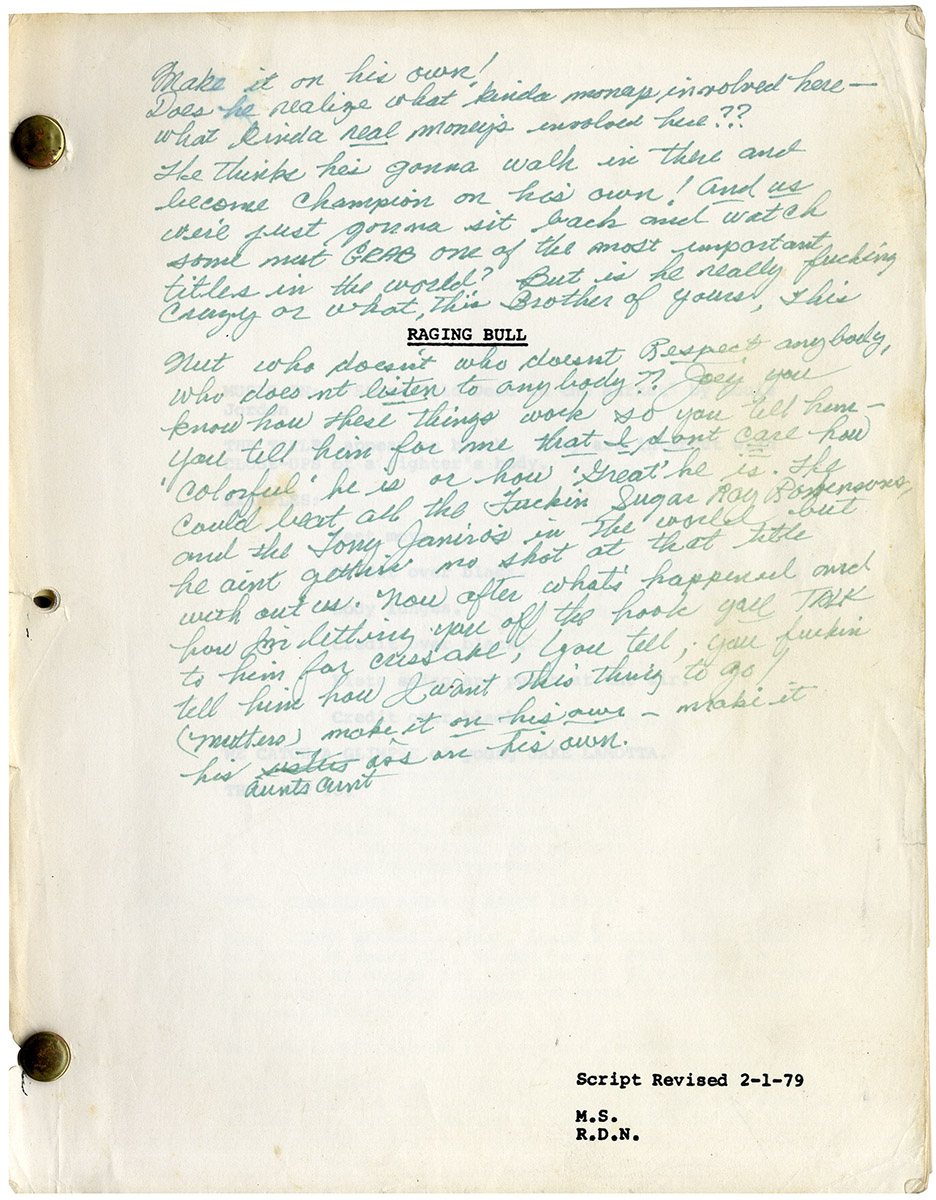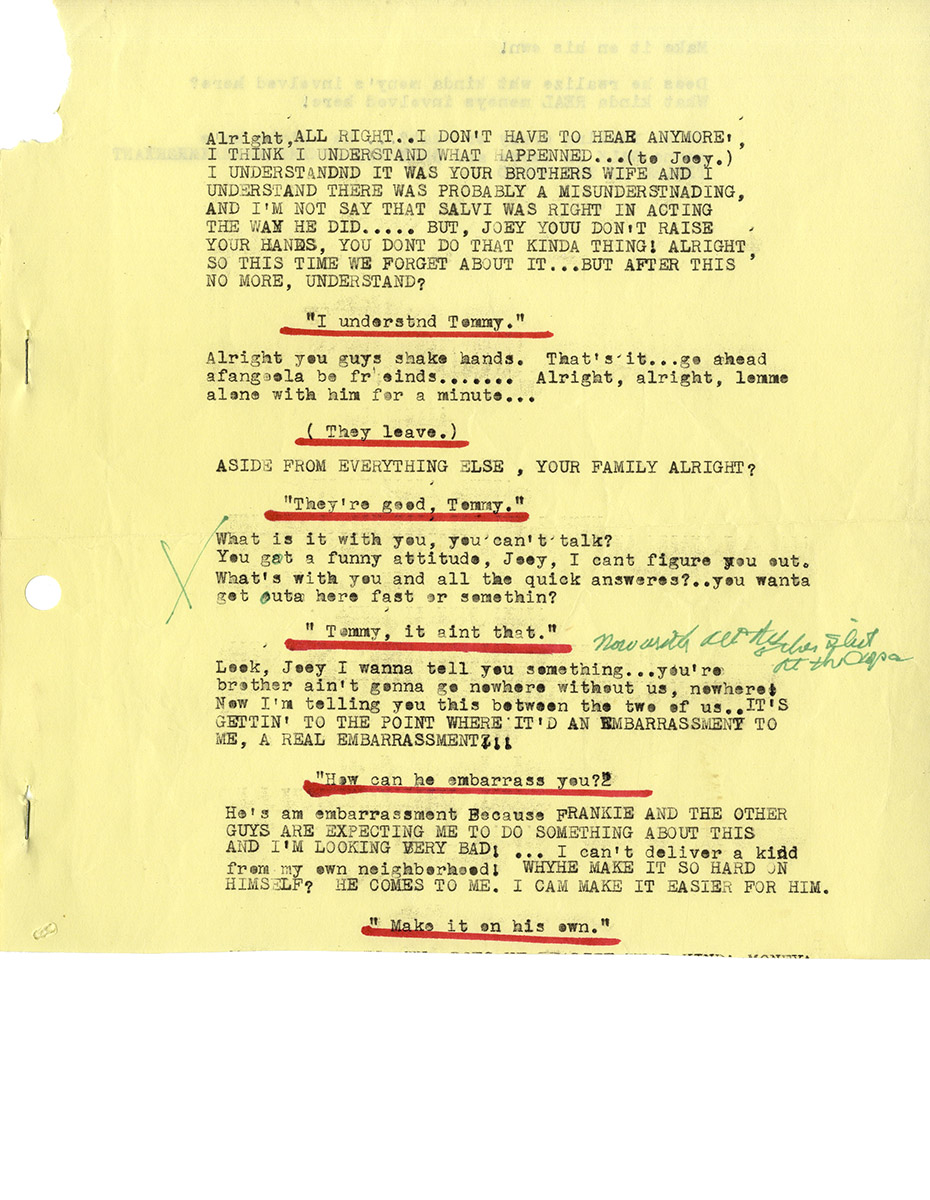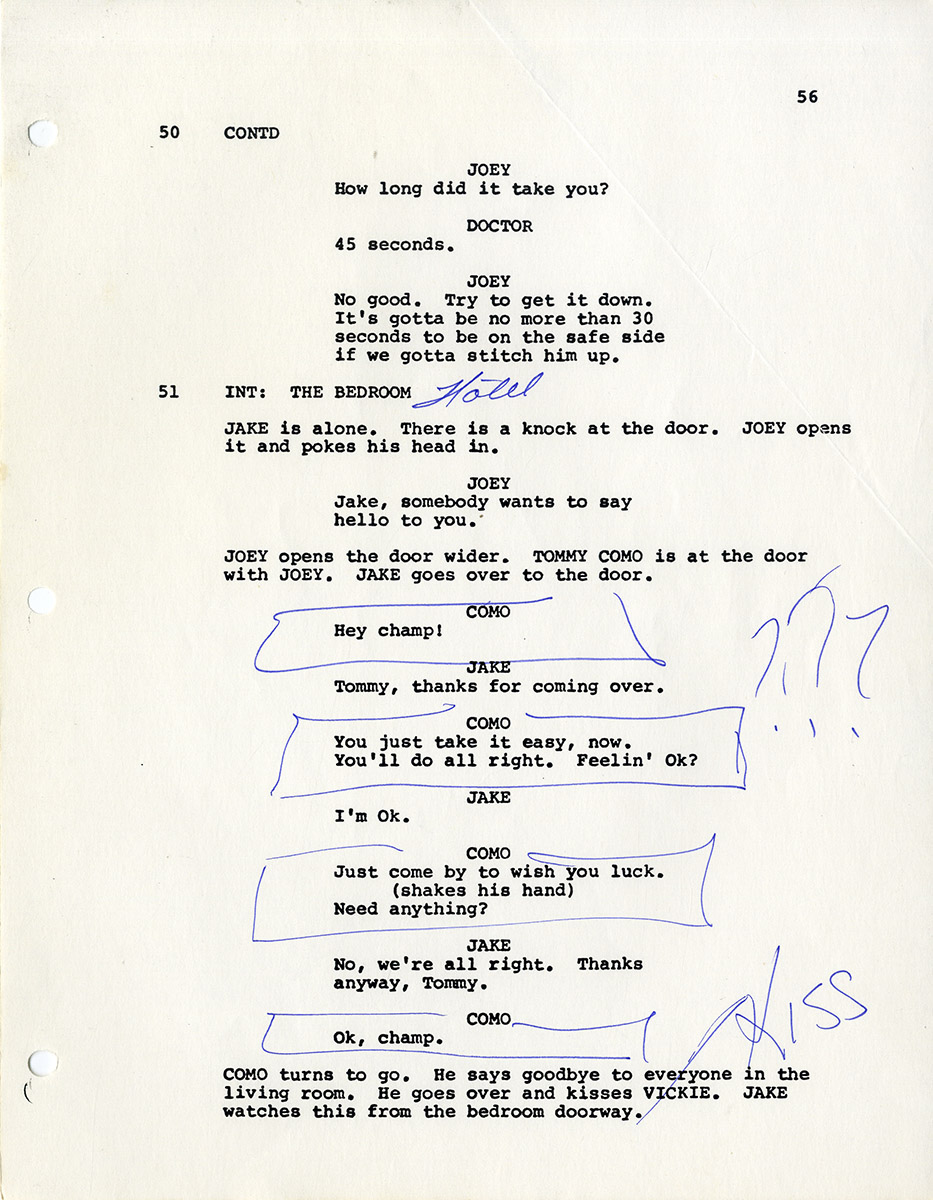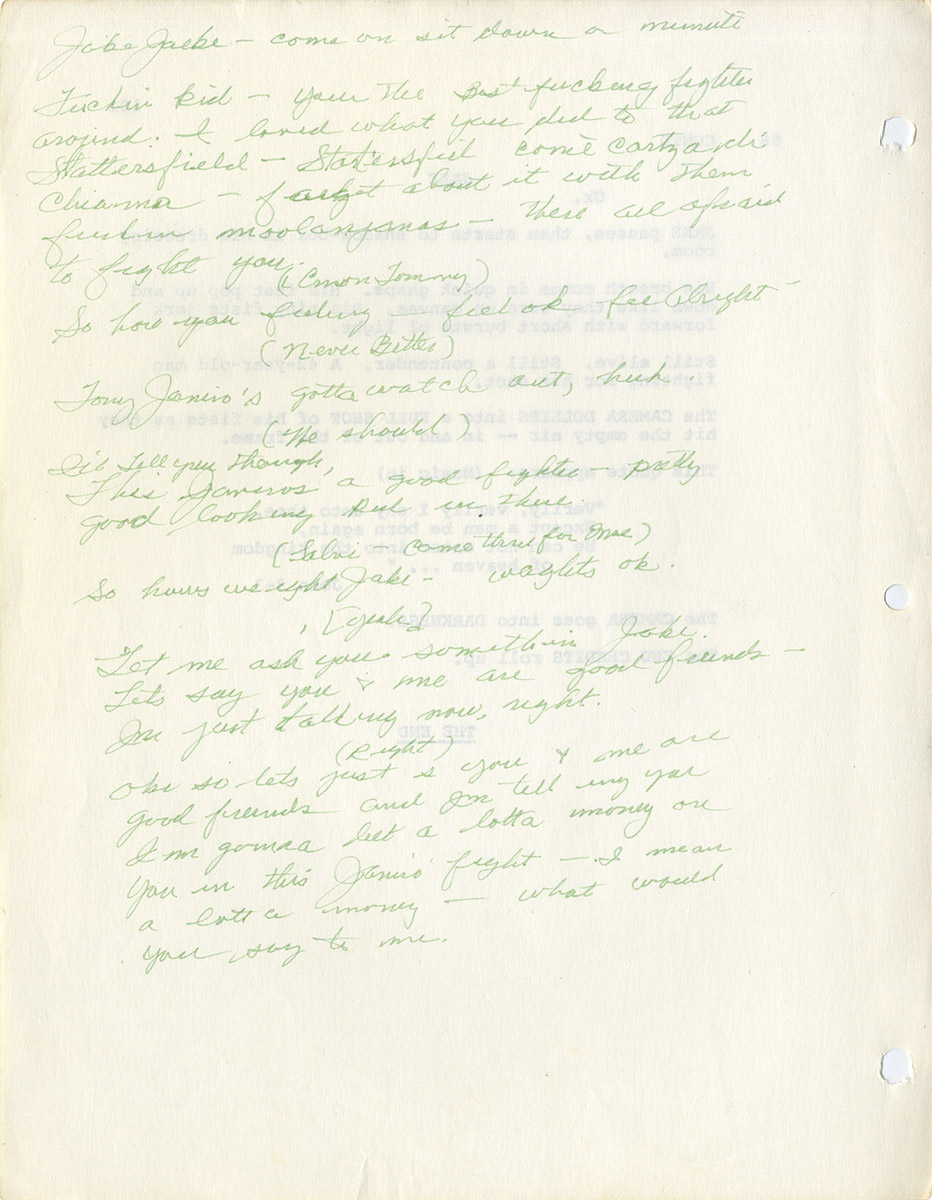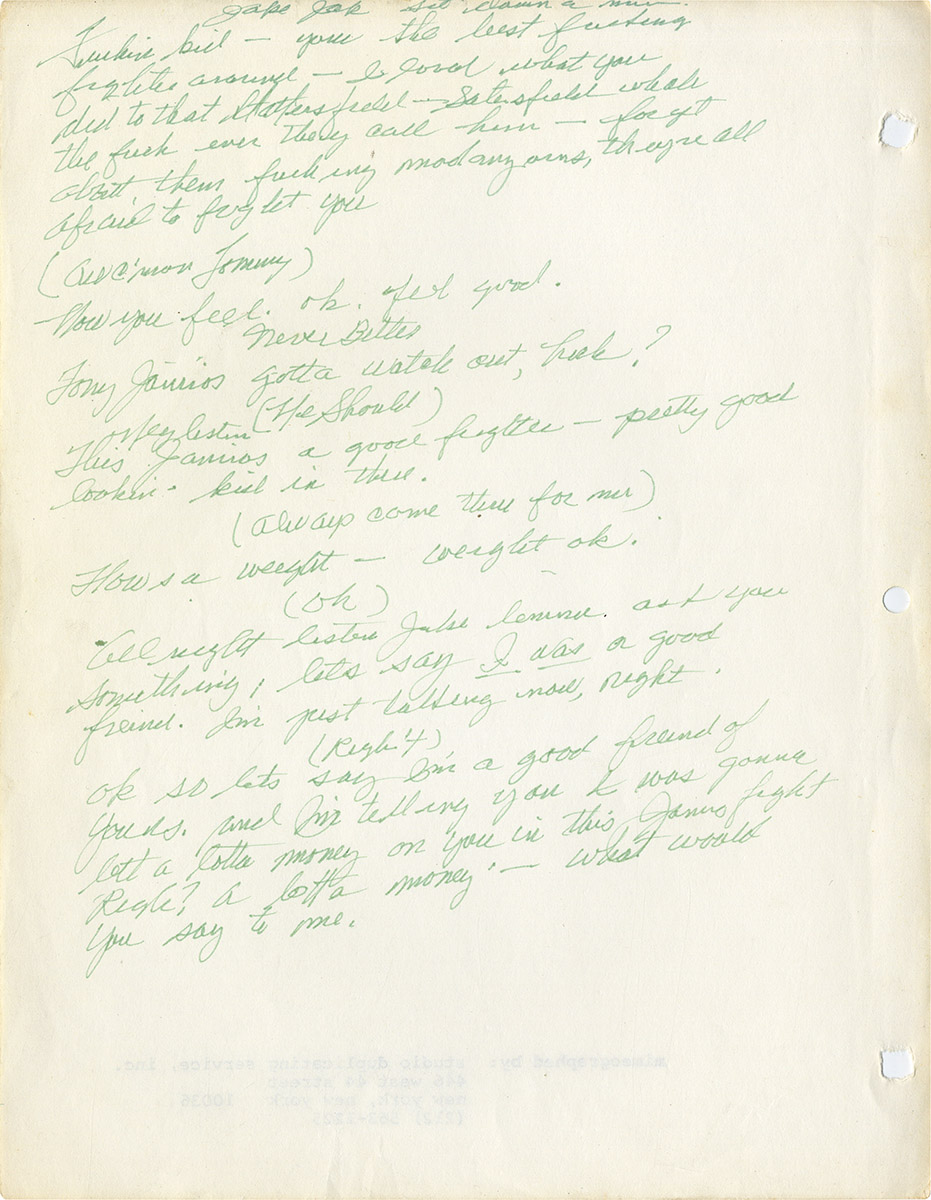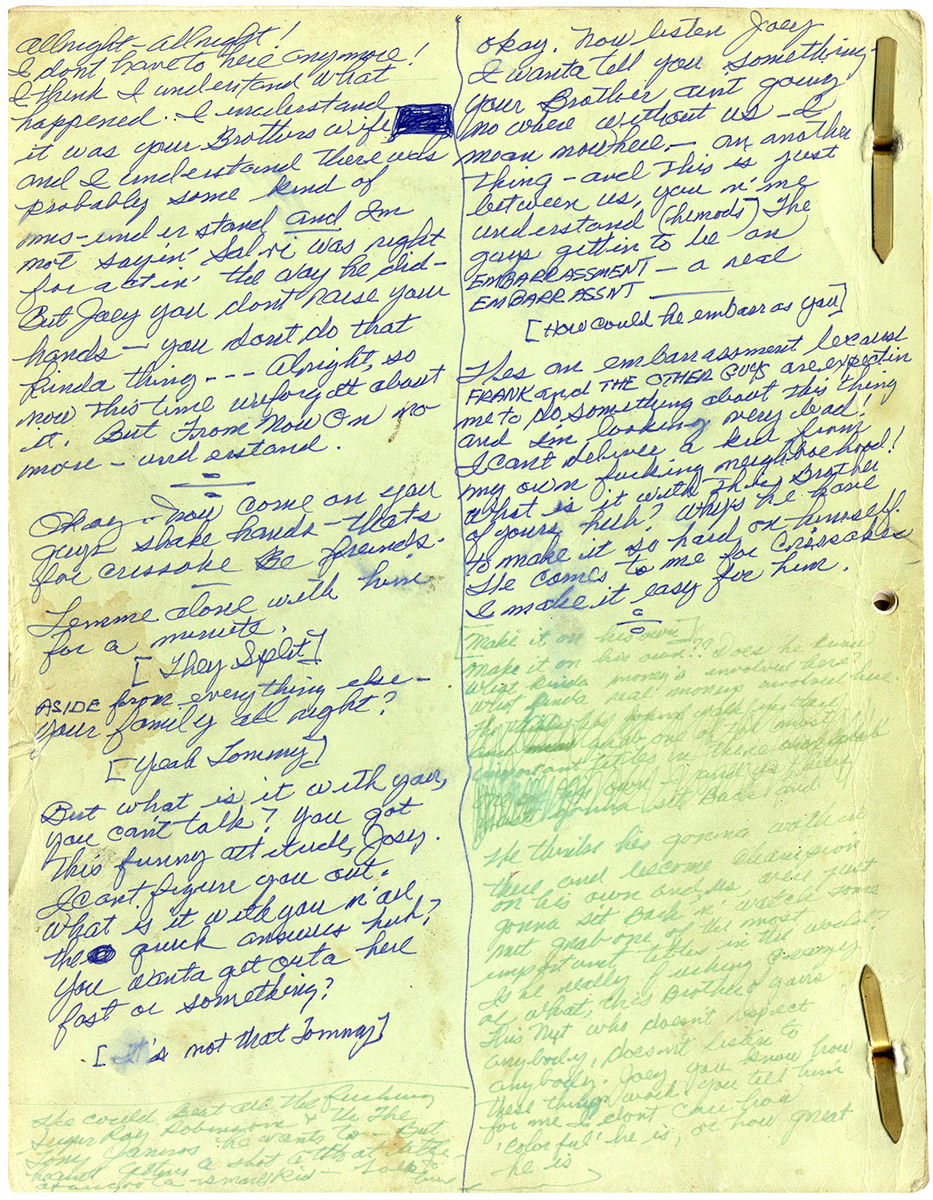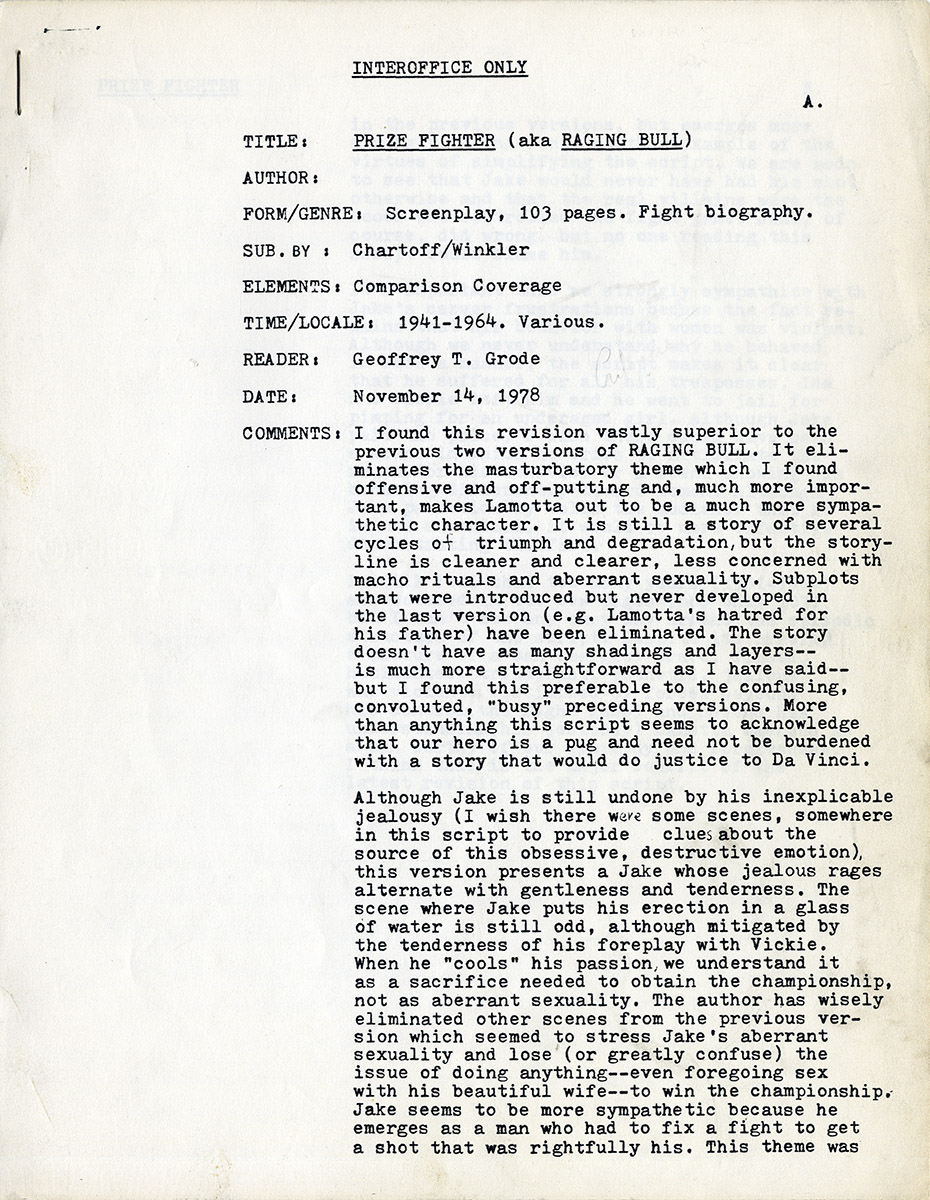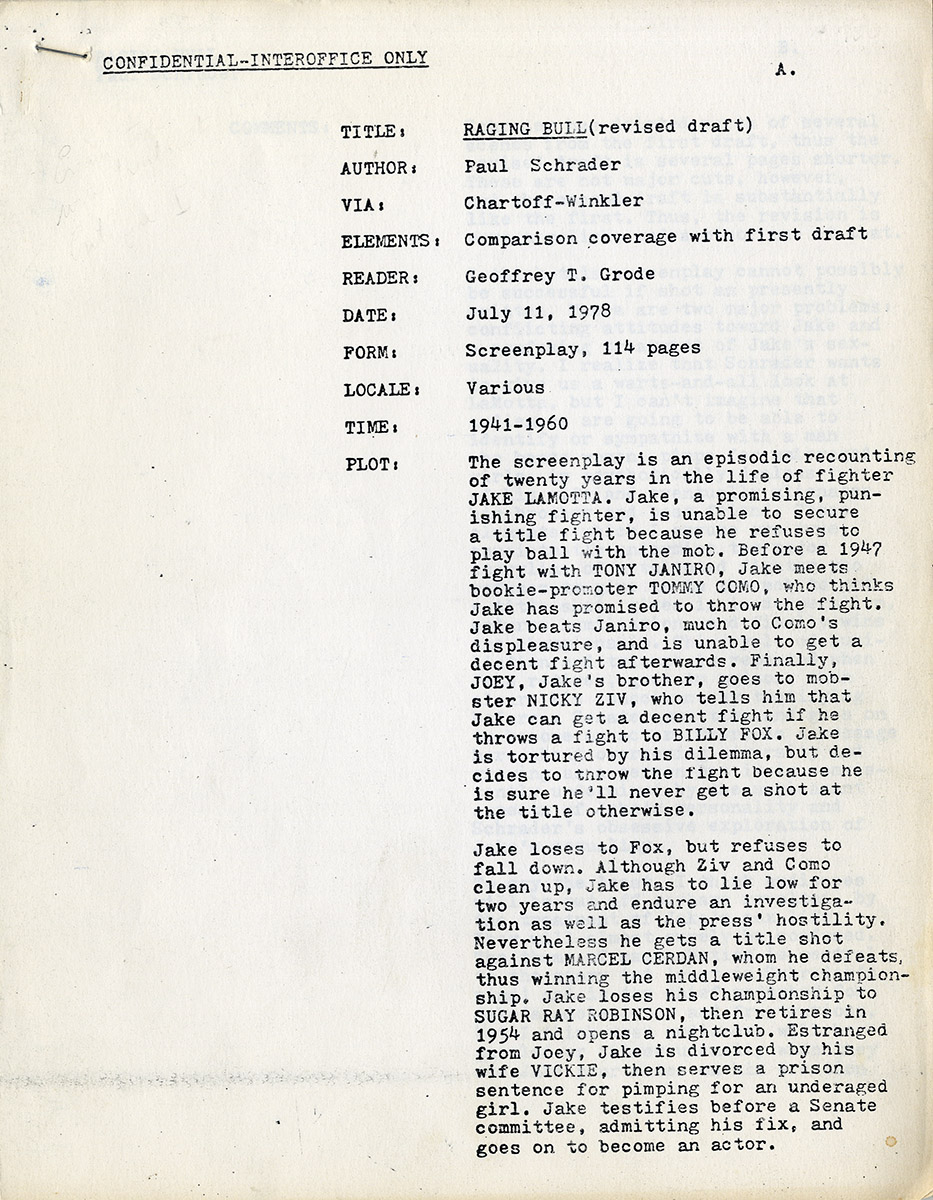Martin Scorsese (director) RAGING BULL (Feb 1, 1979) Film script + 2 draft analyses
[New York]: 1979. Vintage original film script, 11 x 8 1/2″ (28 x 22 cm.), 101 pp. Lacks blank front wrapper, brad bound, small tear to left middle of title page, overall very good+ or better.
[sold with]
Two analyses of earlier drafts of the script done by a staff member at the Chartoff-Winkler production company, one 10 pp. and dated 7/11/78, and one 7 pp. and dated 11/14/78.
A very interesting copy of this script, containing 4 pp. of holograph notes, most likely in the hand of Nicholas Colasanto, who played mafia boss Tommy Como. In these pages he both writes out his lines and makes notes about them. The verso of one of the analyses has a page of MS notes in another, unknown hand. The script is dated 2-1-79 and this draft is noted as by “M.S.” (Martin Scorsese) and “R.D.N.” (Robert De Niro).
Raging Bull is now considered one of the crowning achievements of director Martin Scorsese and the actor most associated with him, Robert De Niro. In addition to Academy Award nominations for Best Picture and Best Director, it won two: Best Actor (De Niro) and Best Editing (Thelma Schoonmaker).
It was De Niro who proposed to Scorsese that they make a movie based on the autobiography of boxer Jake LaMotta. The initial screenplay was written by Mardik Martin (Scorsese’s collaborator on Mean Streets). A subsequent draft was written by Paul Schrader (Taxi Driver). This revised draft, dated 2-1-79, was by Martin Scorsese and Robert De Niro who, according to Scorsese, “spent two-and-a-half weeks on the island of Saint Martin extensively re-building the content of the film.”
Although this is essentially the movie’s shooting script, there are still major differences between what is on the page and the completed film. For example, the title sequence of the MS/RDN screenplay opens with “Stone Cold Dead in the Market” by Louis Jordan on the soundtrack, and “CLOSE-UPS of a fighter’s body,” intercut with the titles, only at the end of which “WE CATCH A GLIMPSE of young JAKE LA MOTTA.”
Compare this to the movie’s actual title sequence — the iconic long-shot black-and-white image of De Niro as LaMotta alone in the ring, practicing his boxing moves in slow motion, while on the soundtrack we hear the lyrical Intermezzo from “Cavalleria Rusticana” by Pietro Mascagni. (The MS/RDN screenplay is titled The Raging Bull, while the movie is simply titled Raging Bull.) The first scene following the title sequence is the same in the film as it is described in the MS/RDN screenplay: 1 INT: BARBIZON PLAZA THEATER — DRESSING ROOM — NIGHT (1964) JAKE LAMOTTA, wearing a tux… At 42, he’s overweight and out of shape… He is rehearsing a nightclub monologue.
However, Jake’s monologue has been completely rewritten. It’s funnier. Only its closing line remains the same, “That’s Entertainment!” So it goes throughout the remainder of the screenplay and film. The structure remains the same. The essential content of each scene remains the same. But the dialogue, frequently profane, may differ, due to the fact that the actors — particularly De Niro as Jake, and Joe Pesci as Jake’s brother, Joey — were encouraged by Scorsese to improvise during shooting, taking off from what was written on the page.
The MS/RDN screenplay rarely indicates shots or camera angles. Scenes are indicated by number and location, e.g., “6 INT: JAKE AND IRMA’S KITCHEN — DAY,” “7 INT: LIVING ROOM,” followed by the dialogue and what the characters do in the course of the scene.
There are scenes in the screenplay, like an encounter between Joey and a girl named Vera at the neighborhood dance hall, that were probably shot, but eliminated during the editing process. Also eliminated are a scene where Jake introduces his new girl, Vickie (Cathy Moriarty), to his dad, Joseph LaMotta, Sr., and a scene where Jake and one of his opponents, the “good-looking” Janiro, are weighed prior to their big bout.
Far more than a sports movie, Raging Bull is a complex formal achievement, a tour de force for its director and its star (both of whom were responsible in part for this screenplay) in a character study of a man who makes his living hurting others, and who compulsively hurts himself and everyone close to him. Scorsese may have had little interest in boxing per se — no matter how beautifully he films it — but throughout the body of his work we see an obsessive interest in violence and the way it is expressed.
Forty years after it was written, Raging Bull is still cinema’s definitive analysis of toxic masculinity.
Out of stock
Related products
-
![MON ONCLE D'AMÉRIQUE [MY AMERICAN UNCLE] (1979) French screenplay](https://www.walterfilm.com/wp-content/uploads/2023/07/MonOncleDAmeriqueFR-SCR_a-540x745.jpg)
Alain Resnais (director) MON ONCLE D’AMÉRIQUE [MY AMERICAN UNCLE] (1979) French film script
$2,500.00 Add to cart -
![(Blaxploitation film) BLACK BELT JONES [1974] Film script by Oscar Williams](https://www.walterfilm.com/wp-content/uploads/2024/06/BlackBeltJonesSCR_a-540x693.jpg)
(Blaxploitation film) BLACK BELT JONES [1974] Film script by Oscar Williams
$750.00 Add to cart -
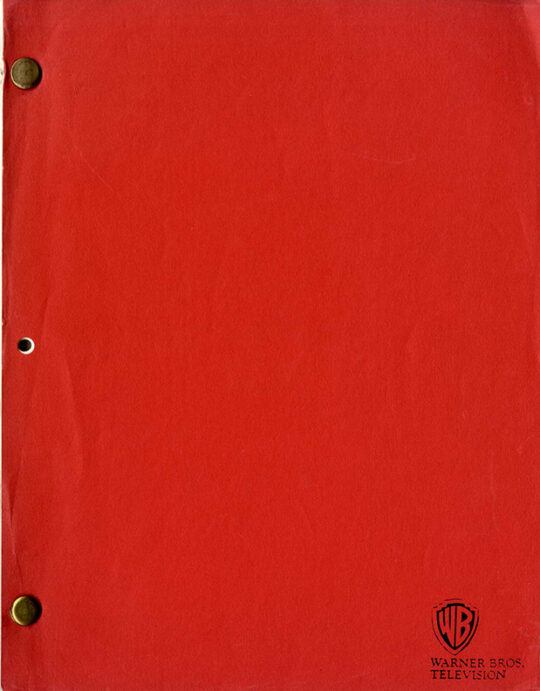
DRESS GRAY (Mar 6, 1981) Second revision script by Gore Vidal
$500.00 Add to cart -
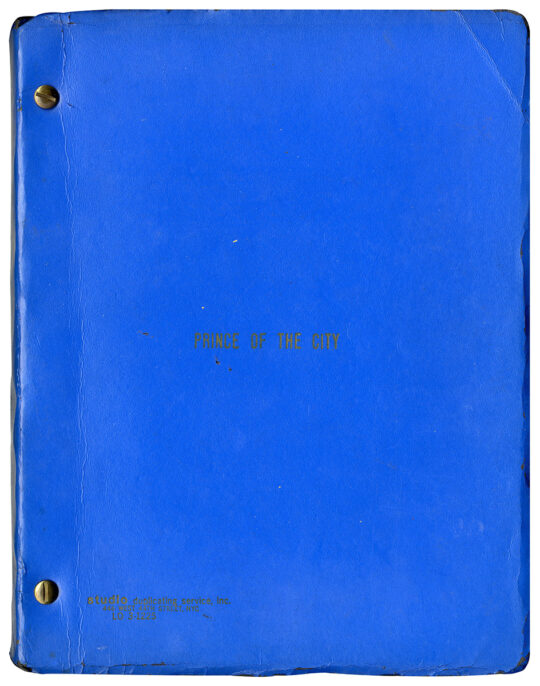
Sidney Lumet (director) PRINCE OF THE CITY (Jan 1980) Final Draft film script
$950.00 Add to cart

